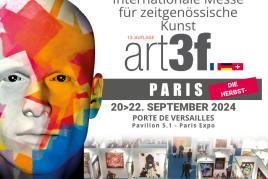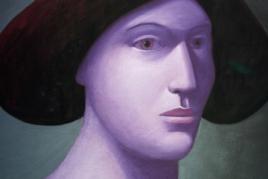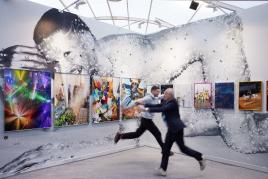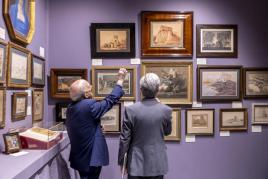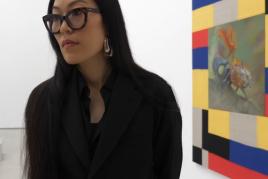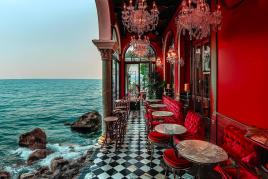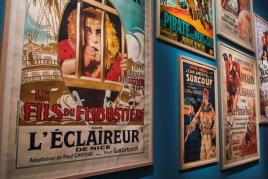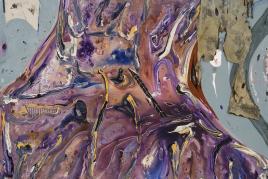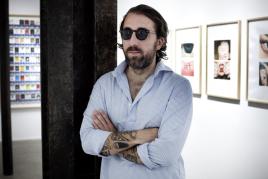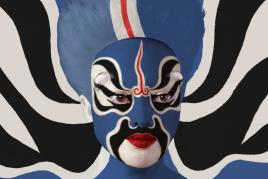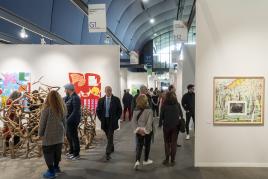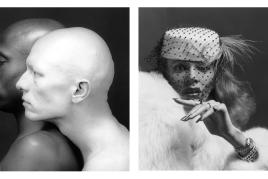Anselm Kiefer Hommage à un poète
 Anselm Kiefer Hommage à un poète - Mit freundlicher Genehmigung von: ropac
Anselm Kiefer Hommage à un poète - Mit freundlicher Genehmigung von: ropacWer: ropac
Was: Ausstellung
Wann: 09.01.2022 - 11.05.2022
Wo: Paris, Frankreich
Poems are ‘like buoys in the sea’ for Anselm Kiefer, who thought of becoming a writer before he turned to painting. ‘You swim from one to the other,’ he writes in his journal in 2017, ‘without them you’re without direction, lost. They are the handholds where something masses together in the infinite expanse.’ Before the poem, however, comes the painting. Bunkers from the Atlantic Wall, buildings in ruins, wheat fields and snow-laden forests emerge from thick impasto in the paintings on view in the exhibition. As Anselm Kiefer works, he holds fragments of poems in his mind, combining, as art historian Andrea Lauterwein writes, their ‘auditory remanence with the retinal remanence of the image’.
Throughout his extensive œuvre, Anselm Kiefer is concerned with history and memory, their preservation and erosion. Born as the Second World War was drawing to a close, the artist grew up in a time during which many in Germany were struggling to face the horrors of the conflict and acknowledge the atrocities perpetrated in the Holocaust. His works emerge from these years of silence, like monuments to the trauma of a generation. The poems of Ingeborg Bachmann (1926–1973) and Paul Celan (1920–1970) gave voice to the emptiness and the grief left by the war. Their words reverberate throughout the works in the exhibition.
Anselm Kiefer’s process is alchemical, allowing words, images and materials to merge and mutate on the canvas. In works like Oh Halme der Nacht (2020) and Für Paul Celan - Angewintertes (2014–2020), he incorporates substances that directly refer to the subject matter of the paintings: straw in the wheat fields and pieces of porcelain in the snow scenes. Several of the artist’s new works feature a technique in which he applies shellac — a naturally occurring varnish — melting and burning it onto the painting to create an opalescent effect. Next to smoke-like forms or apparitions, the material adds an unprecedented, almost spiritual dimension to Anselm Kiefer’s already metaphysical paintings.
Im Herz des Bergs (2021) is one such work featuring the words of Russian poet Osip Mandelstam (1891–1938), translated into German by Paul Celan: ‘Im Herz des Bergs, mit nichts, geht sie ihm hin, die Zeit’ (In the heart of the mountain, time comes to him with nothing). The victims of immesurable violence under repressive, totalitarian regimes, Paul Celan recognised some of his own experience of the Nazi labour camps in Osip Mandelstam’s descriptions of Soviet gulags. Both writers dismantled their native tongues to reflect the debilitating nature of the tragedies they endured, resisting, as Anselm Kiefer describes it, by making ‘language become mute.’ The painter evokes their process as well as their words in his paintings, asking us, as novelist Orhan Pamuk wrote in 2015, to ‘look beyond what words represent and signify, and notice instead their texture and the connections they form with each other.’
Words echo the artist’s material processes of amalgamation and sedimentation in the paintings on view in the exhibition. A group of four works references the German poet August Graf von Platen’s 1820 ballad ‘Das Grab im Busento’ (The Grave in the Busento), which tells the story of Alaric, king of the Visigoths, who died in Italy after leading the sack of Rome and was buried in the Busento river. Part myth, part history, the ancient king’s fate is mirrored in August Graf von Platen’s own death from cholera in Sicily in 1835. Further entwining the German and Italian mythologies, one of the paintings features the Italian translation by poet Giosuè Carducci. Affixed by Anselm Kiefer to a painting of a weathered cliff-face, the words take us through layers of time, highlighting the mutability of language and the cyclical nature of history.
Anselm Kiefer often returns to his paintings over the course of several years, adding and subtracting, destroying them in part with fire and acid, or leaving them outside to be weathered by the elements. ‘I think a painting is never finished,’ he states in a recent interview, ‘it’s always in movement.’ This cycle of creation and destruction is at the heart of the practice of the artist, who sometimes adds highly symbolic three-dimensional objects to his paintings, such as the scythe in Oh Halme der Nacht (2020). In the exhibition, Anselm Kiefer pays homage to the medium of poetry, which he sees as a concentrate of memory and experience, capable of expressing itself outside of historical and material realities. His densely layered paintings bring together the poems, myths and fragments of history that inhabit his imaginary, constructing a space in which to confront the fundamental questions that continue to face humanity.
About the artistAnselm Kiefer was born in 1945 in Donaueschingen, Germany. In 1992, he moved to France, where he lives and works between Paris and Barjac near Avignon. He studied law, literature and linguistics before attending the Academy of Fine Arts in Karlsruhe. As a young artist, Anselm Kiefer encountered Joseph Beuys and participated in his performance Save the Woods (1971). In 1980, Anselm Kiefer was selected for the West German Pavilion at the 39th Venice Biennale and his works have since been shown in prominent solo exhibitions internationally, including at the Städtische Kunsthalle Düsseldorf (1984); Art Institute of Chicago (1987); Neue Nationalgalerie, Berlin (1991); Metropolitan Museum of Art, New York (1998); Fondation Beyeler, Basel (2001); Guggenheim Bilbao (2007); Royal Academy of Arts, London (2014); Centre Pompidou, Paris (2015); Bibliothèque Nationale de France (2015); Albertina, Vienna (2016); State Hermitage Museum, St. Petersburg (2017); Rodin Museum, Paris (2017); Met Breuer, New York (2018) and Astrup Fearnley Museet, Oslo (2019).
Anselm Kiefer was presented the Praemium Imperiale Award by Japan in 1999, and in 2008 he received the Peace Prize of the German Book Trade. In 2007 he showed at Monumenta in the Grand Palais in Paris and was the first artist since Georges Braque to have a permanent installation commissioned for the Louvre. In 2018 his site-specific sculpture Uraeus was exhibited in front of the Rockefeller Center, New York. French President Emmanuel Macron commissioned Anselm Kiefer to create a permanent installation for the Panthéon in Paris in 2020. An exhibition of monumental works by Anselm Kiefer dedicated to Paul Celan is on view at the Grand Palais Éphémère in Paris until 11 January 2022.
Anselm Kiefer
Hommage à un poète
Private view: Sunday 9 January 5—8pm9 January—11 May 2022Paris Pantin69, Avenue Du Général Leclerc 93500 Pantin
Copyright © 2024 findART.cc - All rights reserved

